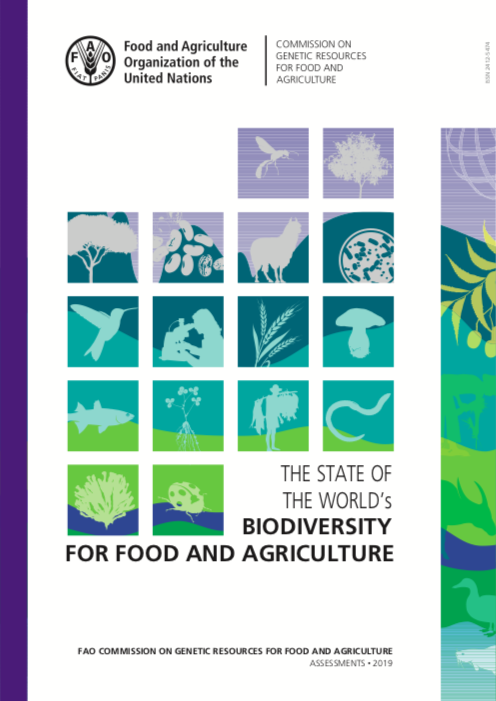 Report from Food and Agriculture Organization of the United Nations
Report from Food and Agriculture Organization of the United Nations
Background
This report presents the first global assessment of biodiversity for food and agriculture (BFA). It complements other global assessments prepared under the auspices of the Commission on Genetic Resources for Food and Agriculture (see Box 1), which have focused on the state of genetic resources within particular sectors of food and agriculture.
Scope and contents of the report
The State of the World’s Biodiversity for Food and Agriculture (SoW-BFA) addresses the sustainable use, development and conservation of BFA worldwide. BFA is taken to include the diversity of animals, plants and micro-organisms at the genetic, species and ecosystem levels that sustain structures, functions and processes in and around production systems and provide food and non-food agricultural products.
The report consists of the following five parts.
Part A – Overview: Chapter 1 describes the context for the assessment and presents key concepts and definitions used. Chapter 2 provides an overview of the contributions that BFA makes to the supply of multiple ecosystem services, to livelihoods, to the resilience of production systems, to the sustainable intensification of food and agricultural production, and to food security and nutrition.
Part B – Drivers, status and trends: Chapter 3 discusses the major drivers of change affecting BFA. Chapter 4 presents an analysis of the status and trends of BFA, including a discussion of the state of knowledge in this field.
Part C – State of management: Chapter 5 considers the state of use of BFA, including discussions of landscape, seascape and ecosystem approaches, diversification in production systems, and management practices that utilize BFA or are considered to promote its conservation and sustainable use. This chapter also addresses the roles of micro-organisms in food processing, in agro-industrial practices and in the digestive processes of ruminant animals. Finally, it includes a discussion of breeding (genetic improvement) activities for various categories of BFA. Chapters 6 and 7, respectively, address the state of characterization and conservation efforts for BFA.
Part D – Enabling frameworks: Chapter 8 describes the state of policies, institutions and capacities that support the conservation and sustainable use of BFA.
Part E – Conclusions: Chapter 9 presents a discussion of needs and challenges in the management of BFA.
